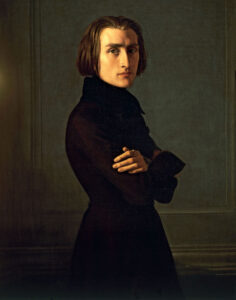
Franz Liszt’s electrifying Piano Concerto No. 1 in E-flat Major will be performed by the Southern Arizona Symphony Orchestra conducted by Linus Lerner at SaddleBrooke on April 5 and at St. Andrew’s Presbyterian on April 6. The soloist will be Pervez Mody. Also on this program will be Capriccio Espagnol by Rimsky-Korsakov, Tchaikovsky’s Romeo and Juliet, and the winner of the Dorothy Vanek Youth Concerto Competition, who will be announced later.
Soloist Pervez Mody is a native of Mumbai (Bombay), India, who was schooled in Russia at the Tchaikovsky Moscow Conservatory in 1987, then at the Calcutta School of Music, and finally at the Karlsruhe School of Music in Germany, where he also performed. He was advised by world-famous pianist Martha Agaerich that in addition to his European appearances, he should perform more in India, which he now does. His favorite composers are Scriabin, Messiaen, Liszt and Chopin. He states, “I feel Bach is the god of Western classical music, while Beethoven is the messiah.” He performs regularly in Europe, Asia and South America, and records with Naxos.
The concerto Mr. Mody will perform by Liszt will be a test of his skills, as, along with Beethoven and Rachmaninov, Liszt was one of the greatest piano composers and soloists. The first performance was in February, 1855 in Weimar, Germany with Liszt as soloist and Hector Berlioz conducting. This concerto has the slang name “the triangle concerto,” as there are triangle solos in Part 3. The work is in four parts or movements, but there are no breaks between them. All the main themes for the work were found in a sketchbook of Liszt’s, dated 1830, when he was 19 years old.
Part 1 is fast, majestic, and opens with an orchestra ritornello presenting the main theme of the work. The piano enters in octaves, and there is much development, key changing, and brilliant piano writing. The ending has very soft piano arpeggios. Part 2 opens with cello and double bass in a slow adagio followed by the piano playing cantabile una corda (soft pedal). Soloist and orchestra go back and forth, and the movement ends with a piano-clarinet duet.
Triangle opens Part 3 and has solos throughout. Themes from movements 1 and 2 are heard, and the music is fast-moving and rhapsodic, and ends with wild solo piano. Part 4 has a fast opening with a new theme following a descending E-flat-major scale. All the previous themes are reviewed, and the solo piano plays more than one rhythm simultaneously. There is a big, dramatic ending in the home key and is very loud, climaxing with a “racehorse” vivace.
This work has some of the most difficult piano playing ever composed, and as in Beethoven, the orchestra is an equal partner, not just an accompaniment.
This program will be performed at SaddleBrooke on Saturday, April 5 at 7:30 p.m. in the DesertView Performing Arts Center and repeated on Sunday, April 6 at 3 p.m. in northwest Tucson’s St. Andrew’s Presbyterian Church.
